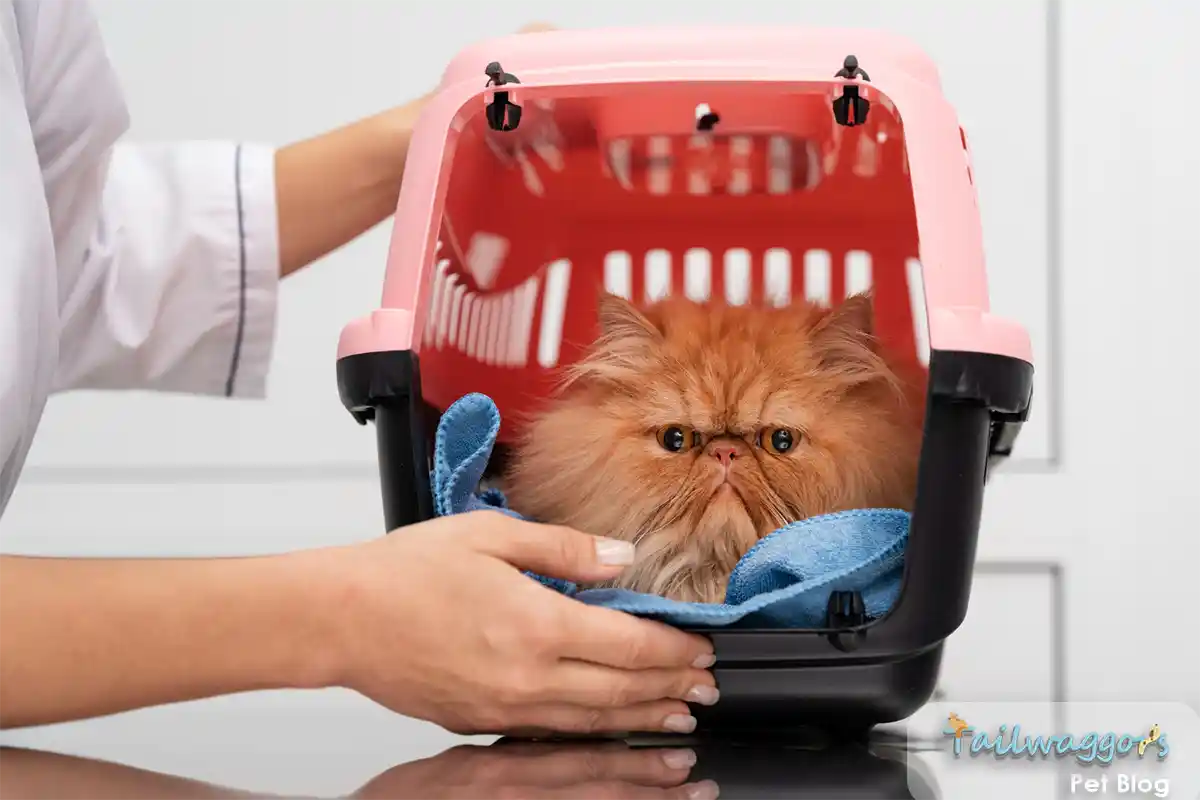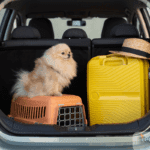When every second matters, being prepared can save your cat’s life. At Tailwaggors, we understand the deep bond you share with your feline companion, and as a veterinarian with over nine years of emergency medicine expertise, I’ve witnessed firsthand how preparation can turn a crisis into a manageable situation. Yet, a recent survey revealed that 67% of cat owners lack a comprehensive emergency plan. That’s why we’ve crafted this professional guide, backed by leading veterinary standards, to ensure you’re equipped to act decisively and protect your beloved pet when the unexpected strikes.
Let’s work together to build a safer, more secure environment for your cat—because their safety is worth every effort. “For a comprehensive approach to safeguarding your cat, explore The Complete Guide to Cat-Proofing Your Home: Vet-Approved Safety Solutions.”
- • Expert-validated protocols: Emergency preparation made easy
- • Professional guidance: Immediate response actions
- • Comprehensive checklist: Essential emergency kit items
- • Step-by-step framework: Easy implementation
- • Resources & templates: Downloadable materials
1. Build Your Professional Emergency Response Network
Emergency veterinary care requires a coordinated network of professionals ready to act at a moment’s notice. Here’s how to build your cat’s emergency response team:
Primary Care Team
- Primary Veterinarian: Your first line of defense for most emergencies
- 24/7 Emergency Hospital: Identify the nearest facility certified by the American Animal Hospital Association (AAHA)
- Mobile Veterinary Service: For situations when transport isn’t possible
Secondary Support Network
- Professional Pet Sitter: Must be certified and trained in emergency protocols
- Trusted Neighbor: Someone within 5-10 minutes of your home
- Family Member: Familiar with your cat’s medical history and behavior
Professional Tip: “Create a shared digital document with your emergency contacts that includes your cat’s medical history, current medications, and behavioral notes. Update it after every vet visit.” – Dr. Esther Knoetze (BSc)(BVSc)
Setting Up Your Emergency Communication Protocol
Establish a clear chain of communication:
- Create an emergency contact card for your wallet
- Program ICE (In Case of Emergency) numbers in your phone
- Set up a group chat or digital document for rapid communication
- Place emergency contact information in visible locations around your home
Compile your full emergency network document, including your primary veterinarian, emergency hospital, pet sitter, and two backup contacts. Ensure each team member has your current contact details and relevant access information.
Store copies in three critical locations: your cat’s emergency kit, your phone’s ICE contacts, and a waterproof sleeve near your cat carrier.
Having this organized network in place can make the crucial difference when every minute counts.

2. Build a Professional Cat Emergency Kit
Essential Medical Supplies
Your cat’s emergency kit requires medical supplies that meet veterinary standards. Based on protocols from the American Veterinary Medical Association (AVMA), your kit should include:
- 1 Sterile gauze pads (4×4 inch)
- 2 Self-adhering veterinary wrap (avoid human bandages)
- 3 Styptic powder for nail bleeding
- 4 Saline wound flush (sterile)
- 1 Digital thermometer (specifically for pets)
- 2 Small flashlight for examining gums
- 3 Disposable gloves (nitrile preferred)
- 1 7-day pill organizer for regular medications
- 2 Copies of current prescriptions
- 3 Medication administration tools (pill pockets, syringes)
Clinical Note: “Never use human medications without veterinary approval. What’s safe for humans can be lethal for cats.” – Dr. Esther Knoetze
Survival Essentials
Nutrition and Hydration (7-Day Supply)
- 1 Dry food in waterproof container
- 2 Wet food with pop-top lids
- 3 Familiar treats for medication administration
- 1 1 gallon per cat per day (7-day supply)
- 2 Collapsible water bowls
- 3 Water purification tablets
- 1 Portable litter box
- 2 7-day supply of preferred litter
- 3 Waste bags and scoop
- 4 Sanitizing wipes
Documentation Portfolio
Create a waterproof emergency documentation kit including:
- Recent photos of your cat (updated quarterly)
- Medical history and vaccination records
- Microchip registration details
- Insurance policy information
- Emergency treatment authorization form
Comfort and Stress Management
Reduce trauma during emergencies with:
- Familiar bedding (small, washable piece)
- Comfort items with home scents
- Favorite toy
- Thundershirt or anxiety wrap if previously used
- Calming pheromone spray (veterinary approved)
Read more about Feline anxiety in our comprehensive guide.
Kit Maintenance Protocol
- 1 Verify medication expiration dates
- 2 Rotate food and water supplies
- 3 Update documentation as needed
- 1 Replace expired items
- 2 Update photos and medical records
- 3 Check integrity of containers
- 4 Test all equipment
- 1 Complete replacement of all perishables
- 2 Full inventory check against master list
- 3 Update all documentation
- 4 Review and update emergency protocols
Professional Insight: “Create two identical kits – one for home and one for your car. In true emergencies, you may not be able to return home.” – Dr. Esther Knoetze
Emergency Kit Storage Requirements
Store your kit according to these veterinary guidelines:
- Temperature-controlled environment (65-75°F)
- Easily accessible location
- Protected from moisture and pests
- Near evacuation route
- Together with carrier and harness
Taking Action: Building Your Professional Emergency Kit
A comprehensive emergency kit serves as your lifeline during a crisis. Following veterinary protocols, assemble your kit with five essential components: medical supplies for immediate care, survival necessities for a 7-day period, a complete documentation portfolio, comfort items to reduce stress, and proper storage solutions.
Store your fully-stocked kit in a temperature-controlled location (65-75°F) near your evacuation route, alongside your cat carrier. Remember to follow the maintenance schedule – monthly checks of perishables, quarterly reviews of all supplies, and annual complete overhauls.
“For a checklist of supplies to keep your cat safe and happy, don’t miss our New Cat Supply Shopping List: Essential Items for Your Feline Friend.”
“If your cat has ingested a harmful substance, refer to our article on Prevent Cat Poisonings: Essential Tips and Emergency Advice for Pet Owners for more detailed guidance.”
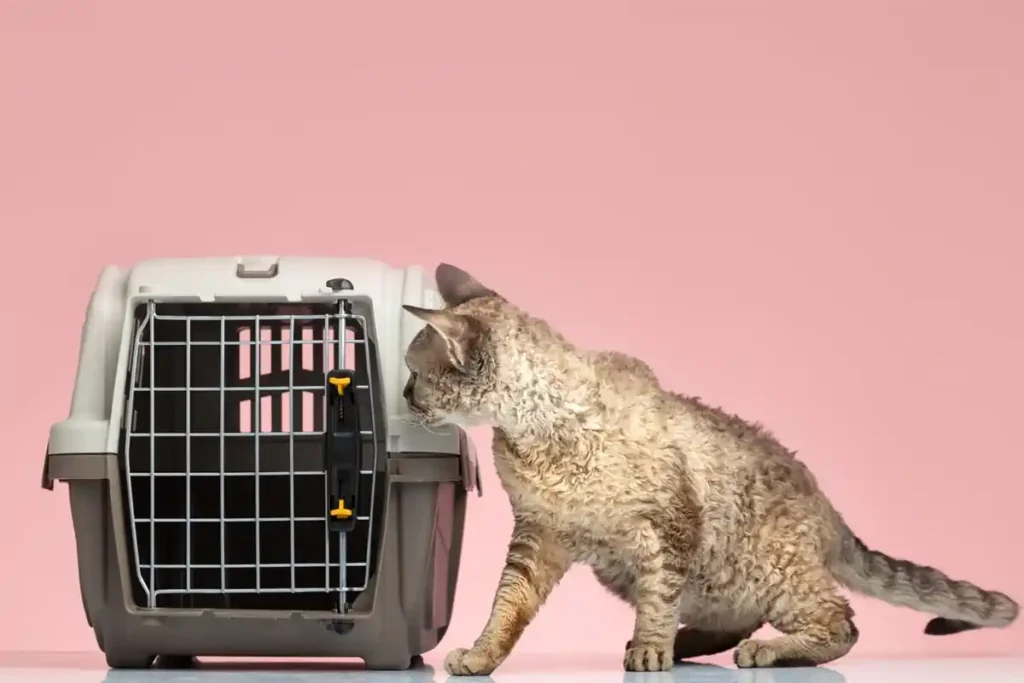
3. Choosing and Using the Right Emergency Carrier
Your cat’s carrier is more than just a transport box – it’s a vital piece of safety equipment that could save your cat’s life. Think of it as your cat’s personal emergency vehicle. Let’s break down what you need to know about selecting, preparing, and using a carrier effectively.
Picking the Right Carrier
When selecting an emergency carrier, prioritize the following features:
- Hard-Sided and Durable: Hard-sided carriers offer better protection during sudden impacts or accidents, compared to soft-sided options.
- Airline-Approved: Ensures compatibility with airline standards for emergencies involving air travel.
- Dual Access: A carrier with top and front doors allows for easy handling and less stress when placing or removing your cat.
- Secure Metal Latches: Strong latches minimize the risk of accidental openings.
- Ventilation on All Sides: Promotes proper airflow to keep your cat comfortable and calm.
- Comfortable Grip Handle: Ensures ease of carrying during emergencies.
- Non-Slip Bottom: Prevents sliding during transport and adds stability.
Size Considerations
- Avoid Excess Space: A carrier that is too large may cause your cat to slide around during transport, increasing stress or risk of injury.
- Right Size for Comfort: The carrier should be large enough for your cat to stand up, turn around, and lie down comfortably.
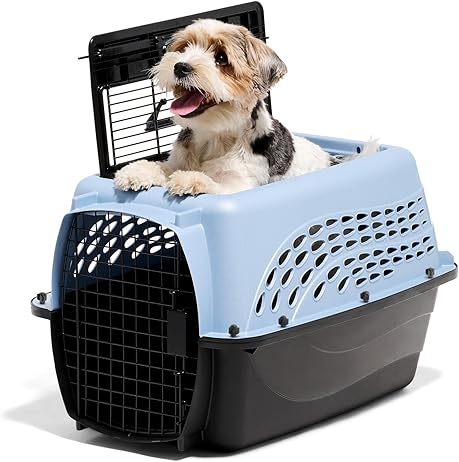
- Price: Check on Amazon
- Rating: 4.7/5 (12,524 reviews)
- Top-loading and front-loading for convenience
- Durable and airline-approved design

- Price: Check on Amazon
- Rating: 4.6/5 (3,332 reviews)
- Folding and collapsible for easy storage
- Ventilated, comfortable design
- A permanent metal ID plate with your contact details
- A waterproof pouch containing medical information
- Reflective tape and a clear photo of your cat
- Week 1: Make the carrier a piece of furniture
- Week 2: Turn it into a treat and meal spot
- Week 3: Practice short closure periods
- Week 4: Start movement training
- Check all parts for wear
- Clean thoroughly
- Update information
- Replace bedding if needed
- Store near your exit, next to your emergency kit
- Turn carrier door-up
- Support your cat’s whole body
- Lower them in backward
- Close door quickly but gently
- Turn carrier horizontal
Bringing It All Together
Your carrier is your cat’s lifeline in an emergency. A good carrier, properly maintained and positioned near your exit, with a cat who’s comfortable using it, can make the difference between a smooth evacuation and a crisis. Take time now to select the right carrier, set it up properly, and train your cat to use it. Practice your loading technique monthly – when emergencies happen, you’ll be thankful for the preparation. Remember Dr. Knoetze’s advice: “The best emergency carrier is one your cat willingly enters and feels secure in. This comes from choosing the right carrier and helping your cat see it as a safe space.”
Quick Tip: “Keep a folded towel and a few treats stored on top of your carrier. These simple items can make emergency loading much easier.” – Dr. Esther Knoetze
4. Ensure Clear Identification
One in three pets will get lost in their lifetime, and emergencies increase the risk of separation. Microchipping is the most reliable form of identification, as tags can fall off or become hard to read over time. Dr. Linda Lord from the American Veterinary Medical Association (AVMA) states:
AVMA tip: “A study of shelters showed that microchipped cats were 20 times more likely than non-microchipped cats to be returned to their families.”
If your cat isn’t microchipped, make an appointment with your vet right away. Also, ensure your cat wears a collar with up-to-date ID tags listing their name, your contact number, and any medical needs. Keep current photos to prove ownership if needed.
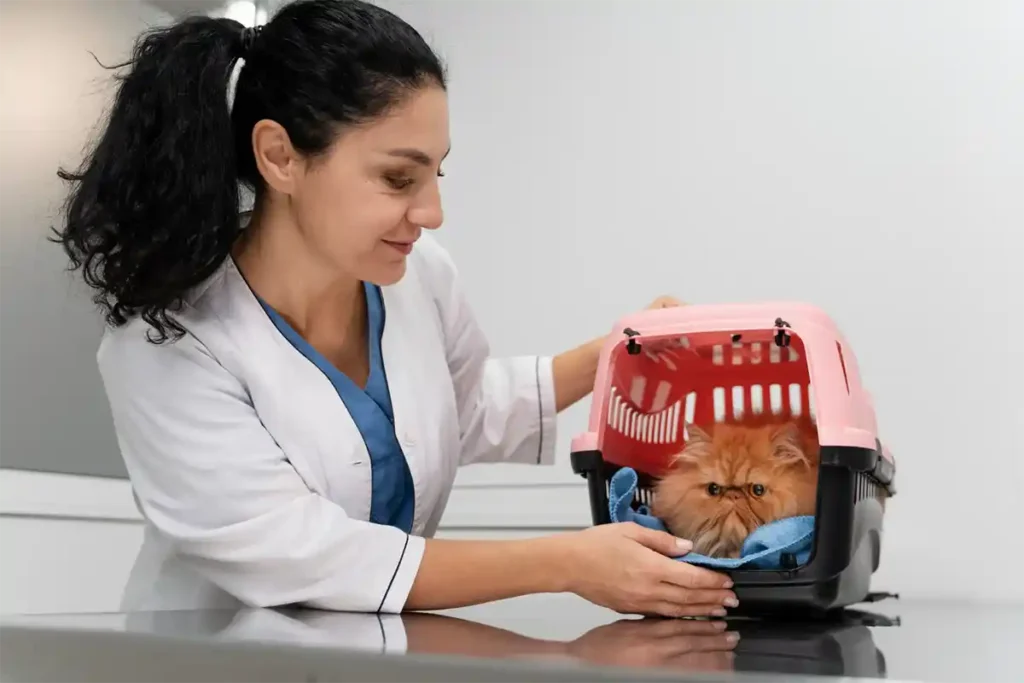
5. Practice Your Emergency Plan
Success in emergencies comes from muscle memory and confident action. Just like fire drills at school, practicing your emergency plan helps everyone stay calm and act effectively when real emergencies occur.
The key to any successful plan is practice. Schedule regular emergency drills to train your cat to come on command, speedily secure them in the carrier, and grab your supply kit. Dr. Jules Benson from Petplan Pet Insurance advises:
Expert Tip: “Practice loading your cat into their carrier swiftly. Reward them generously afterward with high-value treats to build a positive association.”
Real-World Practice Opportunities
Take advantage of these moments to reinforce training:
- Regular vet visits
- Grooming appointments
- Home maintenance checks
- Fire alarm testing days
Bring your cat to the vet for routine visits in their carrier, so they’re used to the process. Have digital and physical copies of your emergency plan available, and review it frequently with your family and pet sitter.
By implementing these 5 critical components, you’ll have a robust cat emergency plan in place. Tailor it to your unique home environment and cat’s needs. Ensure all emergency contacts have a copy, and post the plan prominently in your home. With proactive preparation, you can feel empowered knowing your beloved cat is protected, no matter what challenges arise.
“Understanding which plants are toxic to cats is critical. Consult our Toxic Plants for Cats: A Comprehensive Reference Guide to identify and remove dangerous plants from your home.”
“For a broader perspective on creating a safe environment for your feline, visit our ultimate guide: The Complete Guide to Cat-Proofing Your Home: Vet-Approved Safety Solutions.”
Learn more about First Aid for Pets: What Every Pet Owner Should Know.
Final Note: “Emergency preparation isn’t about fear – it’s about empowerment. Every practice session is an investment in your cat’s safety and your peace of mind.”
🐾 Love cats as much as we do? 🐶
Share this guide with your fellow cat lovers and let them discover everything they need to know about keeping their cat happy and healthy. Forward it now! 💌
Expert Q&A: Cat Emergency Guide
Dr. Esther Knoetze answers your critical questions about cat emergencies and preparation.
Critical warning signs requiring immediate veterinary attention:
- Breathing difficulties or rapid breathing
- Unable to urinate or crying while urinating
- Severe trauma or bleeding
- Seizures or collapse
Essential emergency kit contents recommended by veterinarians:
- Digital thermometer (normal: 100.4-102.5°F)
- Sterile saline solution for wound cleaning
- Gauze and self-adhering bandages
- Ready-to-go pet carrier
ASPCA Poison Control critical warning signs:
- Sudden drooling or foaming
- Vomiting or retching
- Difficulty breathing (>40 breaths/minute)
- Lethargy or collapse
Veterinary-approved transportation protocol:
- Use a secure, sturdy carrier lined with soft bedding
- Support spine and neck when lifting
- Minimize movement during transport
- Keep cat warm and quiet
ASPCA emergency response protocol:
- Identify substance if possible and secure packaging
- Contact pet poison hotline immediately
- Don’t induce vomiting unless directed by professionals
- Monitor breathing and consciousness
Essential preparation steps from AVMA:
- Create and maintain emergency kit
- Keep updated vet contact information accessible
- Practice carrier training monthly
- Document medical history and allergies
Critical emergency indicators requiring instant action:
- Breathing changes or respiratory distress
- Severe lethargy or collapse
- Trauma from falls or impacts
- Unresponsive or severe weakness
Emergency seizure protocol:
- Clear area of hazards
- Note start time and duration
- Keep hands away from mouth
- Video if possible for vet
Critical heat emergency symptoms:
- Excessive panting or drooling
- Bright red gums or tongue
- Vomiting or disorientation
- Collapse or unconsciousness
Life-threatening blockage symptoms:
- Frequent unsuccessful litter box visits
- Crying while urinating
- Lethargy and vomiting
- Abdominal pain when touched
Critical fall response protocol:
- Don’t move if seriously injured
- Check breathing and responsiveness
- Keep warm and calm
- Transport carefully in secure carrier
FEMA-approved evacuation preparation:
- Prepare go-bag with supplies
- Have carrier easily accessible
- Plan multiple evacuation routes
- Keep ID and vaccines updated
Breathing rate guidelines:
- Normal: 20-30 breaths per minute
- Check when cat is resting
- Count chest movements for 15 seconds
- Multiply by 4 for rate
Emergency choking protocol:
- Look for breathing difficulties
- Check for foreign objects if visible
- Don’t pull objects blindly
- Perform cat Heimlich if trained
Critical pain indicators:
- Significant behavior changes
- Hiding or aggression
- Reduced eating or drinking
- Unusual vocalization


